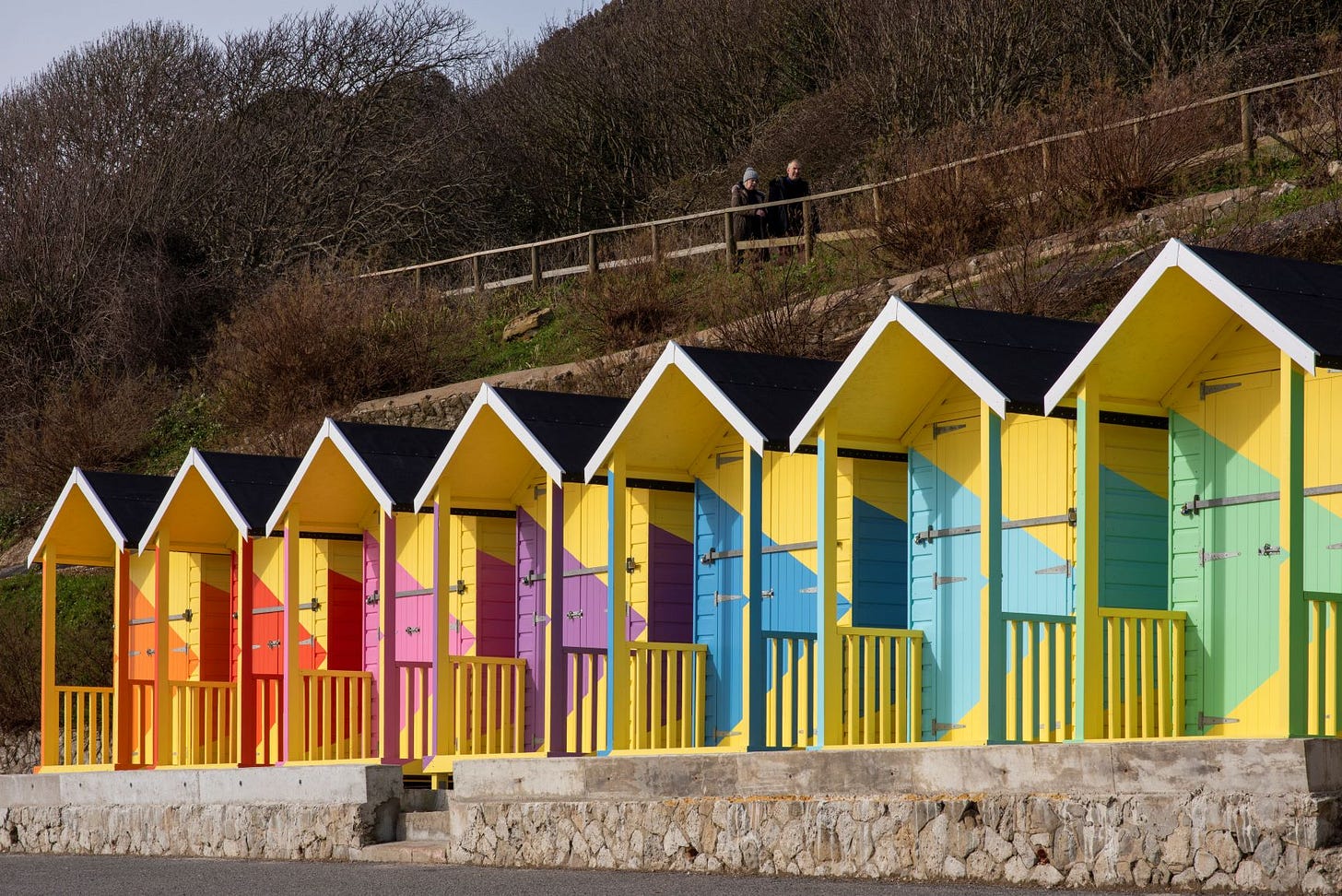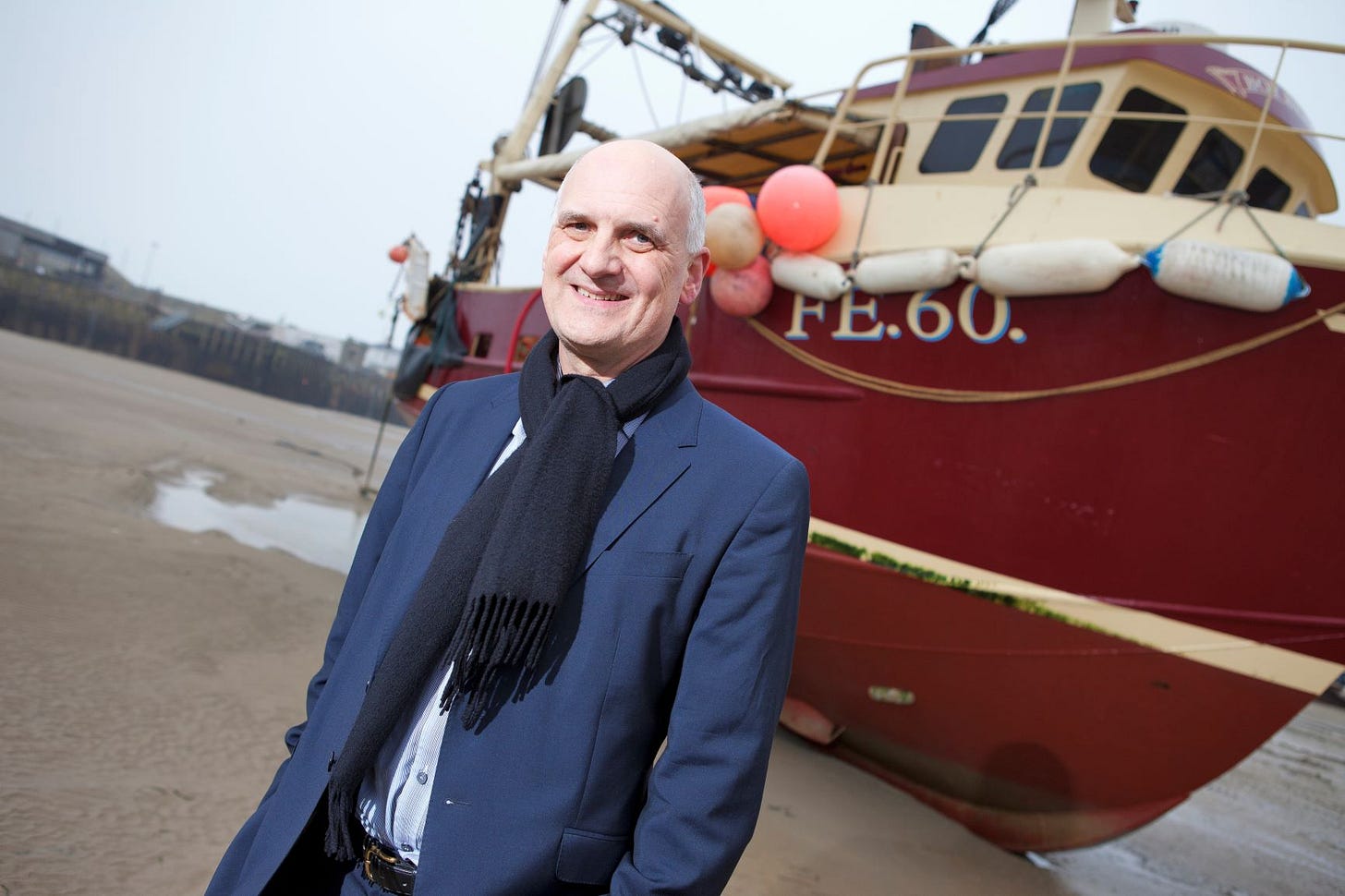Here in England it felt like 12 April would never come: the date when some pandemic restrictions were lifted and we took a bigger stride towards normality. Well come it did, and I’m pleased to say I’ve already had a pint (or two) in a rather chilly pub garden, and as you read this I should be seeing my first gallery exhibition in nearly 5 months. It feels good.
The next lifting of restrictions comes on 17 May when holidays within the UK are allowed. I’m already making plans for my summer trips and Folkestone on the Kent coast will definitely be on my list. Every three years it becomes the UK’s biggest outdoor art gallery and it’s happening again from July. There’s nothing better than seeing some of the world’s best artists with the sound of crashing waves nearby and sea air in your lungs. So to whet your appetites (and mine!) today’s interview is with the curator of the Folkestone Triennial 2021 to see what’s in store.
Happy reading!
All the content in this newsletter is provided to you for free. Why not buy me a digital coffee if you enjoyed it?
barometer
What’s heating up and cooling down in the world of museums this week.
going up
Could there ever be a greater archaeological discovery then finding a whole city?! Well that’s just what’s happened in Egypt as a 3,000-year-old city has been unearthed near Luxor. It’s the largest ancient city ever uncovered in Egypt, and offers “a rare glimpse into the life of the ancient Egyptians" at the time when the empire was at its wealthiest. Not a bad day at the office for the team involved.
going down
Our free time and disposable income. As mentioned, the 17 May will be glorious as further covid restrictions are lifted, and museums and galleries are allowed to reopen. But it means that following months spent idling in front of the TV, from mid-May we'll have a bewildering range of exhibition choices. There’s Epic Iran at the V&A, Barbara Hepworth at the Hepworth Wakefield, David Hockney at the RA, Thomas Becket and Nero at the British Museum, and many, many, many more. Get planning and saving now I say!
curated
Since the pandemic hit, this section has had to branch out from its long-term purpose of being a space to recommend brand new exhibitions to visit. I’m now making the change permanent. So you will continue to see IRL shows here, but you’ll also now always see other exciting highlights, such as TV shows, events, publications, online exhibitions and even brand new museums. It’s my curated list of what’s new in art, museums and galleries.
Spring Cannot be Cancelled: David Hockney in Normandy - a lavishly illustrated new book recording the exchanges between the artist, in Normandy, and art critic Martin Gayford in Cambridge, over the past year. The Spectator says “it teaches you to look harder at the things around you.” Out now
Damien Hirst: Fact Paintings and Fact Sculptures - this show, which kicks off a year of Hirst exhibitions at Gagosian Britannia Street in London, features mostly unseen works from his long-running series of ‘fact’ pieces, created by Hirst over the last 15 years. Open now
The Michelangelo Code: Lost Secrets of the Sistine Chapel - this epic 2-hour show marks the 500th anniversary of the beginning of Michelangelo’s work painting the ceiling of the Sistine Chapel. Art historian Waldemar Januszczak spins an intriguing tale of the hidden religious meanings behind the vast iconic work. Watch on catch-up on Now or Sky Go
interview
Oh I do like to see art beside the seaside. So the evolution of the Kent town of Folkestone into one of the UK’s best art outdoor art destinations has been a dream.
Folkestone has been put on the art map thanks to the Creative Folkestone Triennial, which is one of the most ambitious exhibitions of contemporary art outside the gallery context in the UK. The seaside town has no publicly subsidised gallery, so artists have been invited to use the town as their ‘canvas’ since the first edition in 2008. And many of the works created are kept as permanent installations, such as Tracey Emin’s Baby Things, Michael Craig-Martin’s Folkestone Lightbulb, and Cornelia Parker’s Folkestone Mermaid. So it just gets more art-filled as time goes by.
Thanks to covid (what else) the 2020 Triennial was postponed for a year but is now due to open for an extended run from 22 July with over 20 outdoor, newly commissioned pieces by artists including Assemble, Gilbert & George and Richard Deacon. I’ve spoken to the curator Lewis Biggs to find out more about what’s in store, and to find out what the art extravaganza means for the town.
***
Tell us about this year's Triennial and its theme: The Plot
Stories (and maybe conspiracies) are the life-blood of culture, and there’s the physical meaning of ‘plot’, too. So the title of the exhibition is intended to offset elements of fantasy by grounding it in the reality of time and place. There’s always a gap between stories and experienced reality, a gap that artists recognise as a ‘free’ space in which they can play, with the best artworks borrowing both from fiction (the symbolic world) and from our shared material environment. This Triennial has commissioned 23 amazing new artworks with 25 artists taking part.

How did you select this year's artists and commissions?
Folkestone Triennial is special because it’s all outdoors, treating the town as a gallery. So I devised three ‘walks’ linked to three ‘urban myths’, and these were the starting point for selecting artists. I must work with artists who are happy to move beyond the gallery, to have a direct conversation with the life of a town. And in a certain sense all towns are the same, which is why we can have international artists addressing global issues grounded in the life of Folkestone. Fortunately, the biggest artists, like Richard Deacon, Atta Kwami, Jackie Donachie, Rana Begum or Gilbert and George find this a positive incentive, and take in their stride the very real challenges of working in public space, with all the constraints that implies (material, legal, financial as well as cultural).
How has the pandemic affected the Triennial?
An exhibition of 20 new commissions in public space really does take a three-year lead in. In April 2020 we decided to postpone the Triennial for a year. Then we couldn’t bear to wait quite so long, and brought the opening forward by extending the exhibition (14 weeks instead of 9). The pandemic has highlighted and strengthened the Triennial’s approach by contrasting narrative and reality more strongly than ever before. People are longing for the physicality of pre-pandemic ‘normal’ life, and this has led to a re-emphasised value on locality and neighbourhood.
This is the third edition you've curated. What lessons have you learned and do you feel pressure to get better each time?
Yes, there is pressure, but I’ve been making exhibitions continuously for more than 40 years, and have come to realise how our appreciation of art is led by context above all. My first Folkestone Triennial, Lookout, in 2014 said some obvious things extremely well, I think. After nine years research I now have a deeper knowledge of the context, and that should enable a better – more layered, subtle and perhaps intimate -- exhibition. There will still be connections to discover in the third and fourth visit, a slow burn.
Folkestone is full of artworks that became permanent after previous editions of the Triennial. Which are your favourites?
Not full yet! Unlike a ‘sculpture park’, urban public space never stays still, even in ‘heritage’ areas: the context is always changing and so the art changes too. This is a joy and a challenge. Sometimes it’s the wonderful but small and ‘incidental’ works that survive the best, like Tracy Emin’s Baby Things, Yoko Ono’s Earth Peace or Amalia Pica’s Souvenir, or the functional, like Lubaina Himid’s Jelly Mould Pavilion. Monuments get toppled, but these favourites of mine address long-term social issues that are not going away. Neither will the artworks.
What does the Triennial and the Creative Folkestone Artworks mean to the town and its people?
The Triennial is an exhibition, but it generates a genuine ‘festival’ by energising and making visible a huge amount of resident local talent. It’s a moment when the creative community recognises itself through the recognition of outsiders looking in. And after each Triennial there’s always a wave of incomers (mostly from London) moving to live in Folkestone. In 2017, the total direct economic impact was £5,864,330, plus an indirect impact generated by media coverage of £47,406,059. Between Triennials, Folkestone Artworks provides endless material for conversation, with residents regularly taking visitors on guided tours.

Who would be your dream artist for a future edition?
I need to find artists who are hungry to work with the challenges of public space, including the creative compromises required, and who are secure enough in their own careers to be content to work with an organisation that is a public charity. Add to that, there are some artists who have something (personal) to say, and there are others who are good at catching the zeitgeist. It’s a stroke of great good luck when the former and the latter coincide in the same artist’s work, and that’s my dream artist.
What other highlights of Folkestone should people check out while they're there?
For anyone interested in architecture and urbanism, Folkestone is a collection of small villages of widely different characters, including the old town’s Creative Quarter (the Triennial traverses several of these). It also sits between the North Downs Area of Outstanding Natural Beauty and the Channel, so nature lovers will find brilliant walks in open countryside as well as great beaches. For sociability, I recommend the Harbour Arm which has been imaginatively refurbished as public space, with bars, street food and open-air cinema (as well as art by Antony Gormley and Ian Hamilton Finlay).
Folkestone Triennial, The Plot, from 22 July – 2 November 2021
and finally
Where has the world’s most expensive painting been displayed for the past three and a half years? The mystery of the whereabouts of the $500m Salvator Mundi has all the hallmarks of a Hollywood blockbuster, and a recent documentary has already revealed it caused a diplomatic spat between the highest levels of the French and Saudi authorities. This long-read in today’s Times takes a look at how the da Vinci painting is causing an ugly battle in the art world.
All the content in this newsletter is provided to you for free. Why not buy me a digital coffee if you enjoyed it?





